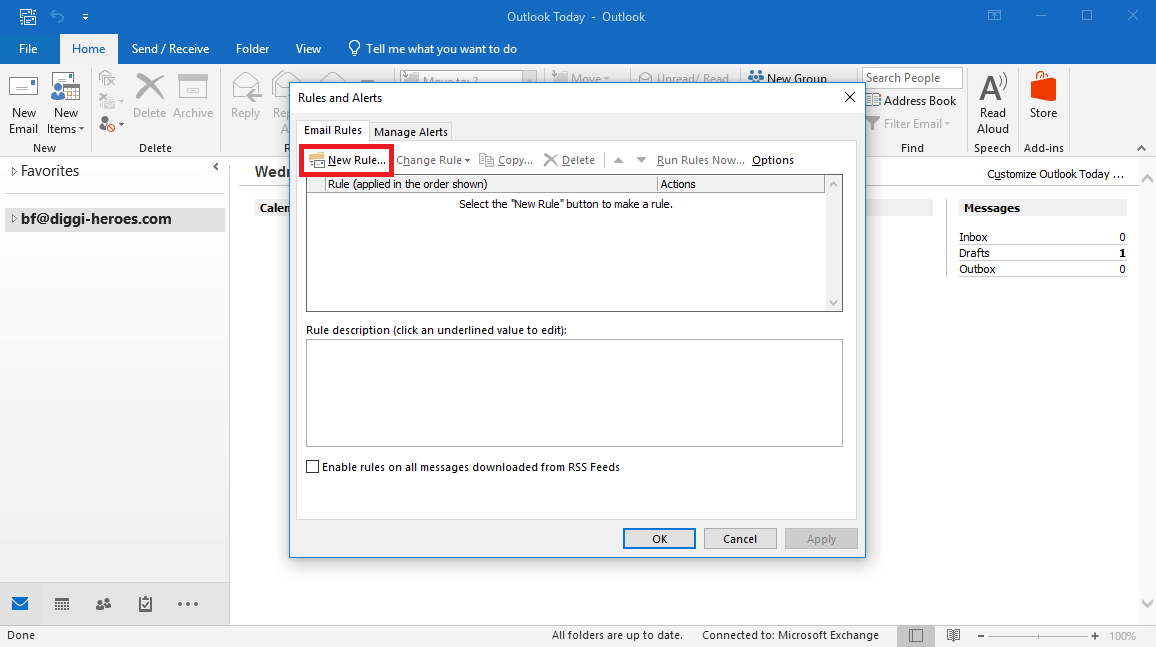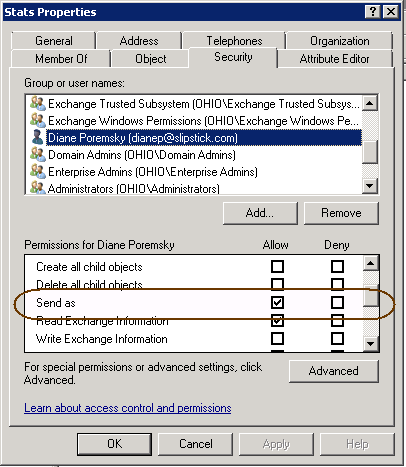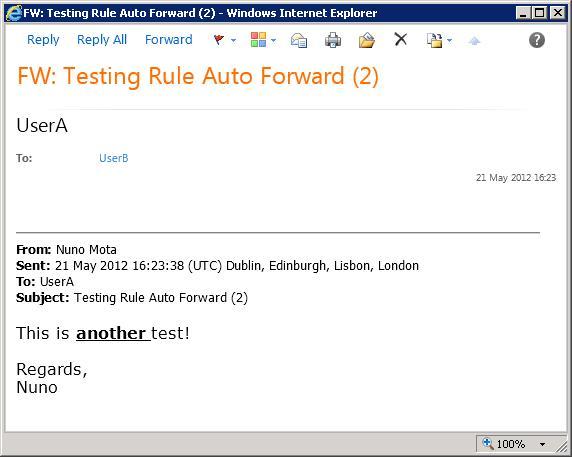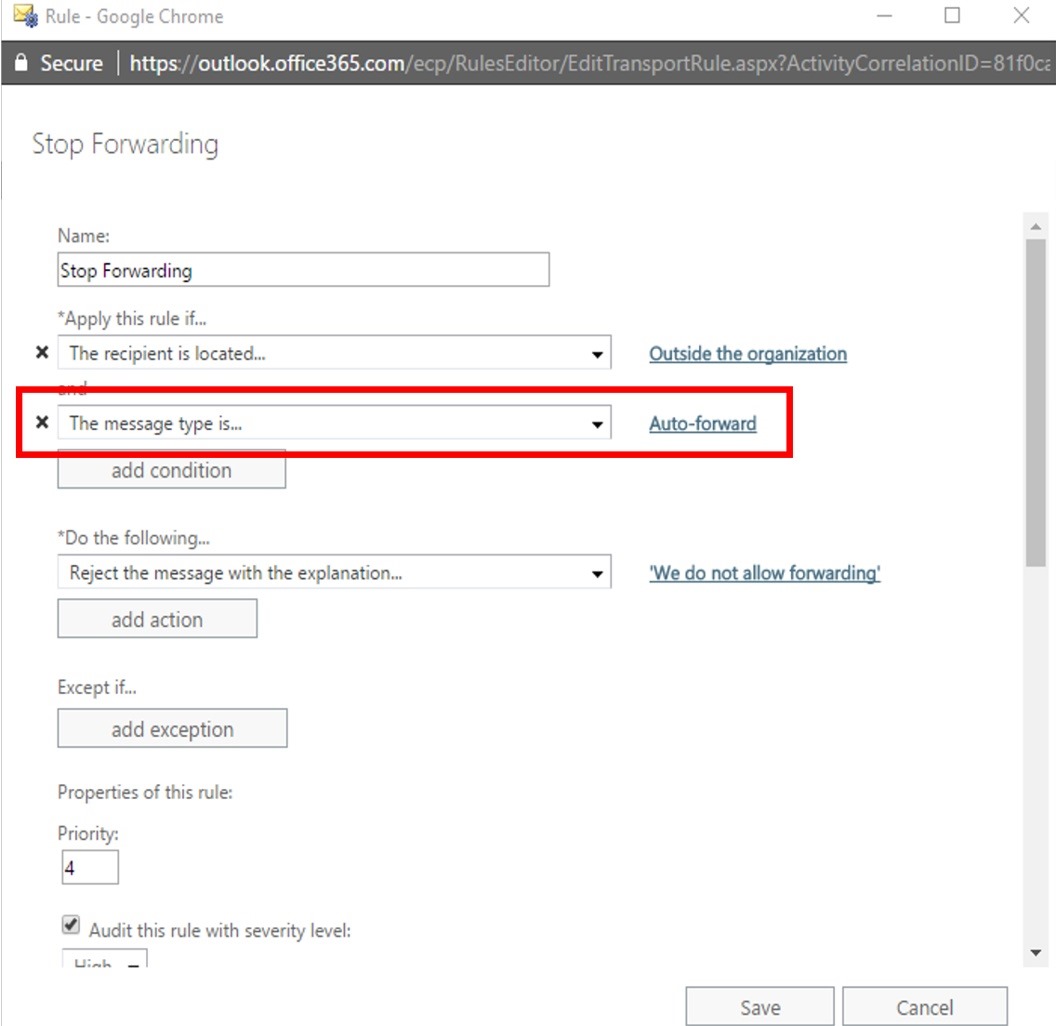
You can remove the rules from Outlook (any version) by starting Outlook with the /cleanrules switch. You can drop the messages or redirect them to another address (this will alert you to the presence of a forwarding rule on the mailbox.) Add the addresses to a distribution group and create a transport rule that looks for mail sent from members of the distribution group. If you can't disable automatic forwarding to the Internet, create a transport rule that drops messages sent from the terminated addresses. See Disable automatic forwarding in Office 365 and Exchange Server to prevent information leakage (TechNet) for the instructions. Users can set up rules to forward mail, administrators can configure Exchange to prevent users from enabling forwarding rules. In older Exchange servers, block forwarding in the Exchange admin center Set-RemoteDomain remote-domain-name -AutoForwardEnabled $false To make this change using PowerShell, use this cmdlet: If This will allow you to block forwarding to all domains then create remote domains for the domains you need to forward mail to. In Office 365 and Exchange 2013 and newer, disable forwarding to remote domains in the Exchange Admin center under Mail flow, Remote Domains. My own preference is to configure Exchange server to not allow automatic forwarding to the Internet, problem solved. To change the settings, use the Set-RemoteDomain command.Remove-InboxRule -Mailbox -Identity "RuleName" Get-RemoteDomain Default | fl AllowedOOFType, AutoReplyEnabled, AutoForwardEnabled You can directly filter your results list for these properties by using: In the result list, look for the settings for AllowedOOFType, AutoReplyEnabled and AutoForwardEnabled.

To see the current configuration for this remote domain use: This usually only return a single result: Default. To get the currently configured Remote Domains, use: Setting the option to allow automatic replies and forwards in Exchange 2010. On the tab named “Format of original message sent as attachment to journal report:” (Exchange 2007) or “Message Format” (Exchange 2010) you can enable or disable the automatic replying/forwarding. You can change the option to also allow OOF messages created by Outlook 2003 and previous if you still need to support those clients (not very likely since they are out of support since April 2014). By default only external OOF messages are allowed.

When you are using Exchange 2007 or Exchange 2010, you can change the Automatic Forward and Automatic Reply settings via the Exchange Management Console (EMC).

The only way to see or change the current configuration for automatic replying and forwarding to the Internet is via the Exchange Management Shell (EMS) with the PowerShell commands as explained below. The Exchange Admin Center (ECP) for Exchange 2013 and Exchange 2016 does not expose the Remote Domain options in the Mail Flow section. Exchange 2013, Exchange 2016 and Exchange 2019

In the “Email rely types” section, click on the “Edit reply types” link to adjust the configuration if needed.Ĭonfiguration for the “Email reply types” for Remote Domains in Microsoft 365. Once logged on, expand the Mail Flow section on the left and then select Remote Domains.Ĭlick on this entry to open the settings overview pane on the right. Most likely, you only have one Remote Domain configured which is called “Default”.ĭouble-click this entry to adjust the configuration if needed.Ĭonfiguration for the “Default” Remote Domain in Microsoft 365. Once logged on, select the Mail Flow section on the left and then the Remote Domains tab at the top. In Exchange Online, you can adjust the Automatic Forward and Automatic Reply setting via the Classic Exchange Admin Center or the New Exchange Admin Center. Exchange 2013, Exchange 2016 and Exchange 2019.This article explains how Exchange Administrators can change this behavior via the Exchange Admin Center (ECP), Exchange Management Console (EMC) or Exchange PowerShell commands (EMS). This is mainly to prevent any unintentional mail loops, which users can create by using message rules in Outlook, which directly forwards the message to an external address or replies to the sender of the message with a template.Īdditionally, it also prevents emails from automatically being forwarded almost unnoticeable when an account gets compromised and a message forwarding rule is created by the attacker. As a secure default, Exchange doesn’t allow sending automatic forwards and automatic replies to the Internet.


 0 kommentar(er)
0 kommentar(er)
